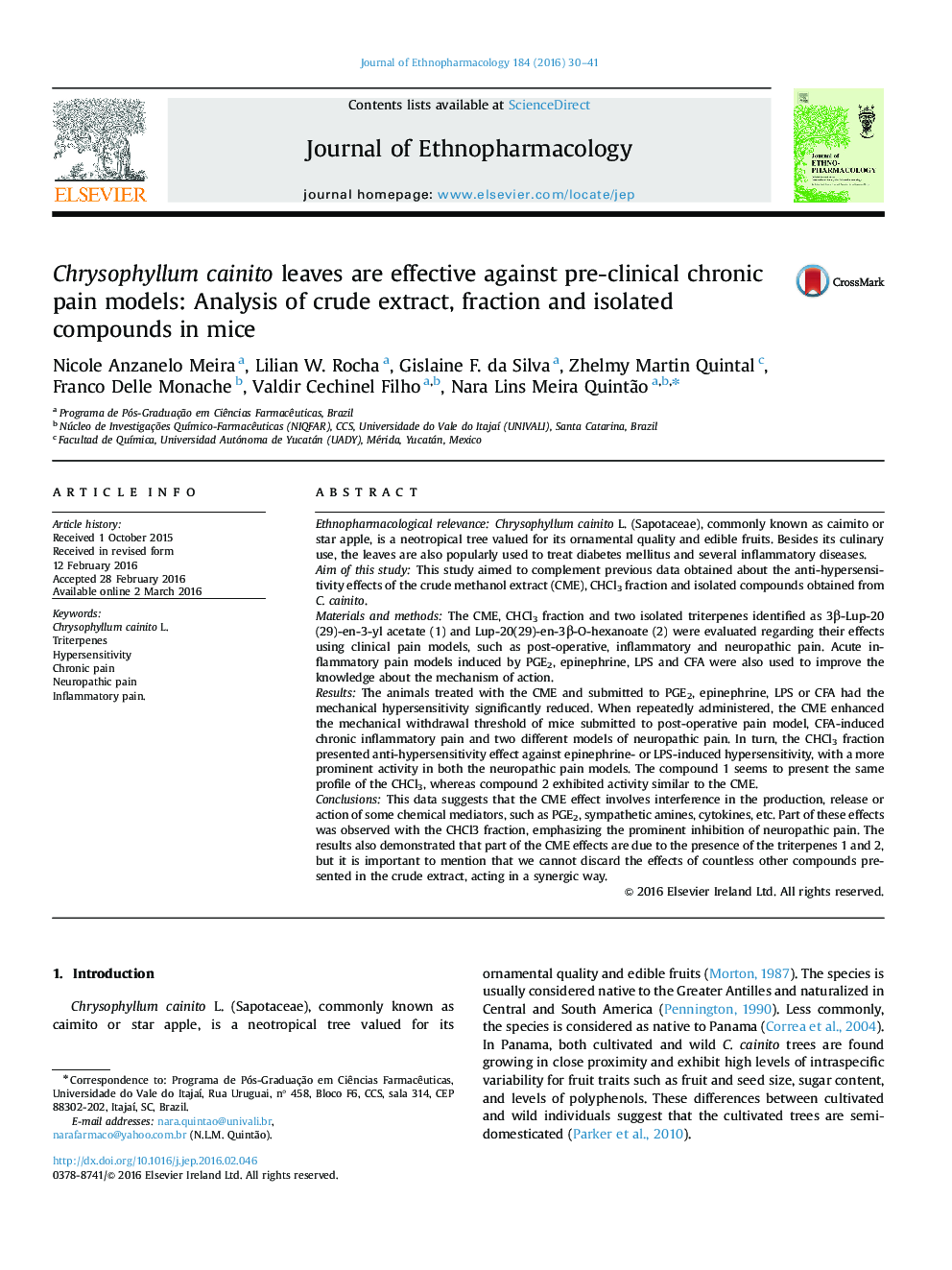| Article ID | Journal | Published Year | Pages | File Type |
|---|---|---|---|---|
| 2544776 | Journal of Ethnopharmacology | 2016 | 12 Pages |
Ethnopharmacological relevanceChrysophyllum cainito L. (Sapotaceae), commonly known as caimito or star apple, is a neotropical tree valued for its ornamental quality and edible fruits. Besides its culinary use, the leaves are also popularly used to treat diabetes mellitus and several inflammatory diseases.Aim of this studyThis study aimed to complement previous data obtained about the anti-hypersensitivity effects of the crude methanol extract (CME), CHCl3 fraction and isolated compounds obtained from C. cainito.Materials and methodsThe CME, CHCl3 fraction and two isolated triterpenes identified as 3β-Lup-20(29)-en-3-yl acetate (1) and Lup-20(29)-en-3β-O-hexanoate (2) were evaluated regarding their effects using clinical pain models, such as post-operative, inflammatory and neuropathic pain. Acute inflammatory pain models induced by PGE2, epinephrine, LPS and CFA were also used to improve the knowledge about the mechanism of action.ResultsThe animals treated with the CME and submitted to PGE2, epinephrine, LPS or CFA had the mechanical hypersensitivity significantly reduced. When repeatedly administered, the CME enhanced the mechanical withdrawal threshold of mice submitted to post-operative pain model, CFA-induced chronic inflammatory pain and two different models of neuropathic pain. In turn, the CHCl3 fraction presented anti-hypersensitivity effect against epinephrine- or LPS-induced hypersensitivity, with a more prominent activity in both the neuropathic pain models. The compound 1 seems to present the same profile of the CHCl3, whereas compound 2 exhibited activity similar to the CME.ConclusionsThis data suggests that the CME effect involves interference in the production, release or action of some chemical mediators, such as PGE2, sympathetic amines, cytokines, etc. Part of these effects was observed with the CHCl3 fraction, emphasizing the prominent inhibition of neuropathic pain. The results also demonstrated that part of the CME effects are due to the presence of the triterpenes 1 and 2, but it is important to mention that we cannot discard the effects of countless other compounds presented in the crude extract, acting in a synergic way.
Graphical abstractFigure optionsDownload full-size imageDownload high-quality image (285 K)Download as PowerPoint slide
